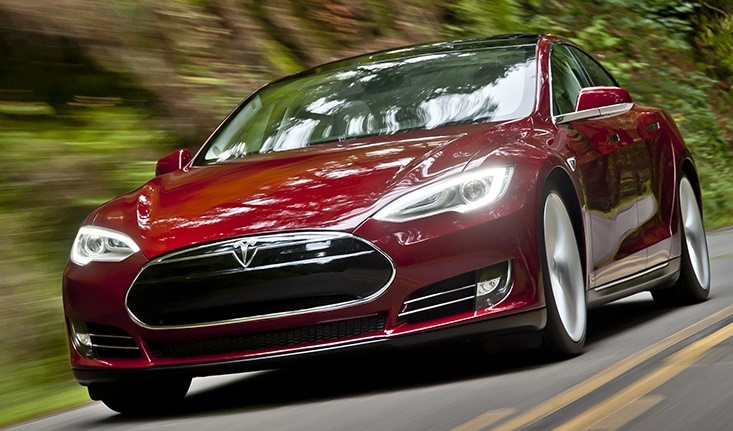
According to Tesla, the Model S all-electric car is one of the fastest sedans in the world. Photo | Tesla, U.S. Department of Energy
According to Christopher Mims in The Wall Street Journal, America is not ready for electric vehicles. He took a 1,000 mile trip in a Lucid Air Grand Touring and found America’s electric vehicle infrastructure lacking at best. Mims also had serious concerns about the variability in the actual range electric vehicles can go compared to what is advertised. He writes:
After my latest immersion in EVs, I have a list of issues that need to be tackled for the average car buyer to feel ready to go electric.
1. EV makers need to level with drivers about the true range of vehicles
I have never received as many emails about something I wrote as I did about last week’s column. Whether readers were excited about the possibility of longer-range EVs, or skeptical of EVs in general, the most common issue raised was the real-world range of these vehicles.The reason is clear: The way the Environmental Protection Agency tests electric vehicles can yield results that differ significantly from the actual range of the vehicle under real-world driving conditions, according to a recent paper on the subject—and my own experience driving a Lucid Air Grand Touring from New York City to Montreal and back.
In some ways, this isn’t the EPA’s fault. All kinds of conditions—from speed to changes in elevation—can have a big impact on how much energy a vehicle uses. In some contexts, like stop-and-go driving in a city, an EV can exceed its rated range. In others, like very cold weather, EVs can suffer a big drop in range—as much as 30%, according to another recent study.
As vehicles like pickup trucks go electric, this problem is compounded. These vehicles aren’t generally all that aerodynamic to begin with, and using them for towing and other truck-type activity can slash their range to a fraction of the EPA estimate. Automakers will probably need to concentrate more on making these vehicles lighter and more efficient, because engineers can squeeze only so much energy into even the most advanced next-generation batteries.
Unfortunately, most drivers don’t learn this until they’ve had significant experience with an EV. It’s an unnecessary source of “range anxiety” that could be dispelled if automakers were clearer that mileage can vary by a lot—and that drivers can take simple steps to make vehicles go farther. (By far the most effective, as several readers noted, is driving 60 miles an hour instead of 75.)
2. America’s charging infrastructure is inadequate
The range of EVs wouldn’t matter nearly as much as it does if America had enough chargers. Many readers, especially owners of Teslas, who benefit from that company’s unmatched network of fast chargers, wrote to say that going on a road trip and only using slower, publicly available chargers, as I did on my 1,000-mile trip, was an amateur move.Others wrote in to say that they almost always charge their vehicle at home, so charging is never an issue for them.
These are both valid points, but they ignore the fact that not everyone is going to buy a vehicle from Tesla. The fact that both Ford and GM have partnered with Tesla to make a portion of its charging network available to their customers will help, starting in 2024, but could also tax that network in new ways. Those who buy EVs from the two Detroit automakers will gain access to 12,000 of Tesla’s approximately 17,000 fast chargers, known as Superchargers, in the U.S. That deal approximately double the number of public fast chargers available to drivers of Ford and GM vehicles, according to data from the Energy Department.
And the home-charging crowd assumes that all buyers of an EV can install a charger of their own, which simply isn’t the case for anyone without a garage or a street parking spot directly adjacent to their home.
While America has more fast chargers than ever, for those on road trips, or with longer commutes, the convenience of not having to stop frequently to recharge is neutralized when parking lots, hotels and restaurants don’t have charging stations.
The Biden administration has committed $7.5 billion to increasing the number of chargers in the U.S., aiming to have stations every 50 miles on U.S. highways. Some in state governments, especially in the West, say that’s unrealistic. But private enterprise is realizing that drivers who have to stop for between 20 minutes and an hour to recharge could be lucrative in other ways—for example by spending money on food while they wait. General Motors and Pilot announced last summer they are teaming up to add 2,000 fast-charging stalls to 500 Pilot and Flying J stops across America.
These efforts still don’t address the paucity of chargers in places people are already stopping for long stretches. The utility of this kind of charging became apparent to me at the midpoint in my road trip, in Montreal, where the local utility company has invested heavily in making on-street charging stations available throughout the city. Once I got the hang of using this network, the fact that I could charge within a few blocks of wherever I went in the city added a whole new level of convenience to driving around it in an EV.
About $1.25 billion of the money allotted by the U.S. government for building out charging infrastructure is specifically aimed at bringing charging stations to “urban and rural communities, downtown areas and local neighborhoods”—as opposed to long-distance transportation corridors such as highways.
Read more here.
